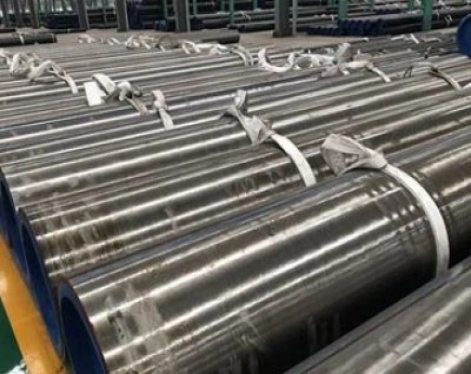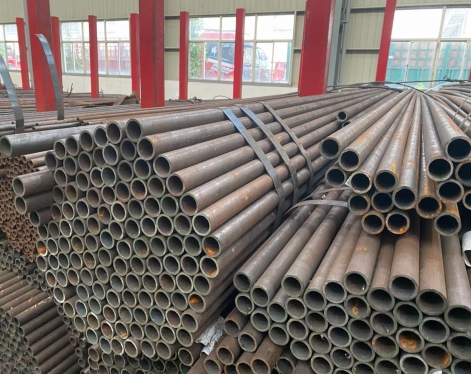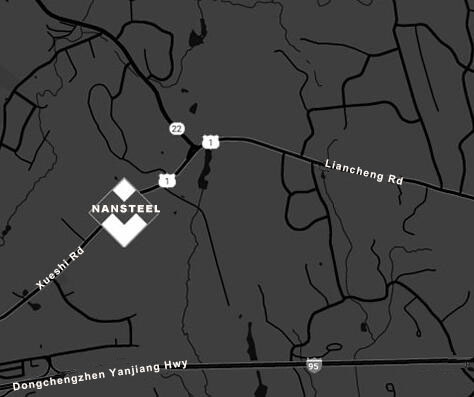The bending test of boiler tubes — including seamless pipes and ERW pipes — is one of the key quality inspection methods to ensure that they can work normally under high temperature, high pressure, and complex stress conditions. The main purpose of the bend test is to uate the mechanical properties, deformation capacity, and crack resistance of boiler tubes when subjected to bending stress. For seamless pipes, the test focuses on assessing their uniform microstructure and resistance to cracking under heavy bending loads, while for ERW pipes, it helps verify the weld seam’s strength and stability. The following are several common boiler tube bend test methods and their detailed descriptions.
Cold bending test
Cold bending test refers to bending boiler tubes at room temperature to uate their plasticity and crack resistance under non-heating conditions. Cold bending test is usually used to check whether the material quality and processing technology of boiler tubes are qualified.
Test steps:
1. Sample preparation: Cut a standard length of sample from the boiler tube, usually 3-5 times the tube diameter.
2. Fixture installation: Fix the specimen on the bending test machine and ensure that it has good contact with the bending die.
3. Apply bending force: Apply bending force to the specimen through the testing machine to bend it to a specified angle (such as 90°, 180°, etc.).
4. Observe and record: Observe whether the specimen has cracks, peeling or other defects during the bending process, and record the bending angle and force value.
Applications:
The cold bend test is applicable to boiler tubes made of low-alloy steel, carbon steel, and other materials. It is primarily used to uate their plastic deformation capacity at room temperature.

Hot bending test
The hot bending test is to bend the boiler tube under high temperature conditions to simulate the thermal and mechanical stresses it is subjected to during boiler operation. This test method is closer to the actual working environment of boiler tubes.
Test steps:
1. Sample preparation: Cut a sample of standard length and clean the surface.
2. Heat treatment: Heat the specimen to a specified temperature (usually the operating temperature of the boiler tube or higher).
3. Bending operation: Apply bending force to the specimen at high temperature to bend it to a specified angle.
4. Cooling and inspection: Cool the specimen to room temperature and inspect its surface and interior for cracks, deformation, or other defects.
Applications:
The hot bend test is applicable to boiler tubes made of high-temperature alloy steel, stainless steel, and other materials. It is primarily used to uate their crack resistance and deformation capacity at high temperatures.
Three-point bending test
The three-point bending test is a commonly used mechanical property testing method that uates the bending strength and toughness of boiler tubes by applying a concentrated load.
Test steps:
1. Sample preparation: Cut a standard length of specimen and measure its diameter and wall thickness.
2. Install the specimen: Place the specimen on two supporting points with the distance between the supporting points being the span (usually 3-5 times the pipe diameter).
3. Apply load: Apply concentrated load at the center of the specimen until the specimen bends or breaks.
4. Record data: record the load-displacement curve and calculate the flexural strength and elastic modulus of the specimen.
Applications:
The three-point bend test is suitable for uating the overall bending resistance and toughness of boiler tubes and is commonly used in material research and development and quality control.
Four-point bending test
The four-point bend test is similar to the three-point bend test, but the load is distributed at two points, allowing for a more uniform assessment of the bending resistance of the boiler tube.
Test steps:
1. Sample Preparation: Cut a standard length of specimen and measure its dimensions.
2. Specimen Installation: Place the specimen on two supports, with the distance between them being the span.
3. Loading: Apply load at two symmetrical locations on the specimen until the specimen bends or breaks.
5. Data Recording: Record the load-displacement curve and calculate the specimen's flexural strength and elastic modulus.
Applications:
The four-point bend test is suitable for uating the bending resistance of boiler tubes under uniform load and is often used for high-precision material testing.
Conclusion
There are various bend testing methods for boiler tubes, each with its own specific applications and advantages. Cold and hot bend tests are primarily used to assess the tube's plasticity and crack resistance, while three-point and four-point bend tests focus more on uating its bending strength and toughness.
Read more: Bending Performance of Boiler Tubes
Cold bending test
Cold bending test refers to bending boiler tubes at room temperature to uate their plasticity and crack resistance under non-heating conditions. Cold bending test is usually used to check whether the material quality and processing technology of boiler tubes are qualified.
Test steps:
1. Sample preparation: Cut a standard length of sample from the boiler tube, usually 3-5 times the tube diameter.
2. Fixture installation: Fix the specimen on the bending test machine and ensure that it has good contact with the bending die.
3. Apply bending force: Apply bending force to the specimen through the testing machine to bend it to a specified angle (such as 90°, 180°, etc.).
4. Observe and record: Observe whether the specimen has cracks, peeling or other defects during the bending process, and record the bending angle and force value.
Applications:
The cold bend test is applicable to boiler tubes made of low-alloy steel, carbon steel, and other materials. It is primarily used to uate their plastic deformation capacity at room temperature.

Hot bending test
The hot bending test is to bend the boiler tube under high temperature conditions to simulate the thermal and mechanical stresses it is subjected to during boiler operation. This test method is closer to the actual working environment of boiler tubes.
Test steps:
1. Sample preparation: Cut a sample of standard length and clean the surface.
2. Heat treatment: Heat the specimen to a specified temperature (usually the operating temperature of the boiler tube or higher).
3. Bending operation: Apply bending force to the specimen at high temperature to bend it to a specified angle.
4. Cooling and inspection: Cool the specimen to room temperature and inspect its surface and interior for cracks, deformation, or other defects.
Applications:
The hot bend test is applicable to boiler tubes made of high-temperature alloy steel, stainless steel, and other materials. It is primarily used to uate their crack resistance and deformation capacity at high temperatures.
Three-point bending test
The three-point bending test is a commonly used mechanical property testing method that uates the bending strength and toughness of boiler tubes by applying a concentrated load.
Test steps:
1. Sample preparation: Cut a standard length of specimen and measure its diameter and wall thickness.
2. Install the specimen: Place the specimen on two supporting points with the distance between the supporting points being the span (usually 3-5 times the pipe diameter).
3. Apply load: Apply concentrated load at the center of the specimen until the specimen bends or breaks.
4. Record data: record the load-displacement curve and calculate the flexural strength and elastic modulus of the specimen.
Applications:
The three-point bend test is suitable for uating the overall bending resistance and toughness of boiler tubes and is commonly used in material research and development and quality control.
Four-point bending test
The four-point bend test is similar to the three-point bend test, but the load is distributed at two points, allowing for a more uniform assessment of the bending resistance of the boiler tube.
Test steps:
1. Sample Preparation: Cut a standard length of specimen and measure its dimensions.
2. Specimen Installation: Place the specimen on two supports, with the distance between them being the span.
3. Loading: Apply load at two symmetrical locations on the specimen until the specimen bends or breaks.
5. Data Recording: Record the load-displacement curve and calculate the specimen's flexural strength and elastic modulus.
Applications:
The four-point bend test is suitable for uating the bending resistance of boiler tubes under uniform load and is often used for high-precision material testing.
Conclusion
There are various bend testing methods for boiler tubes, each with its own specific applications and advantages. Cold and hot bend tests are primarily used to assess the tube's plasticity and crack resistance, while three-point and four-point bend tests focus more on uating its bending strength and toughness.
Read more: Bending Performance of Boiler Tubes









